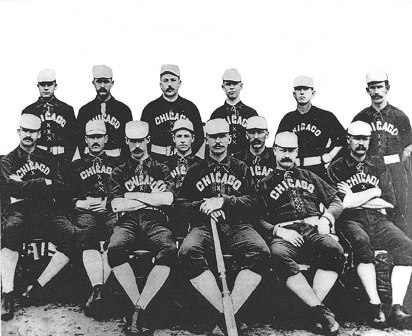After he hit 11 home runs in 1918, and for the next two decades, stories about the discovery of “The Next Babe Ruth” became commonplace in newspapers across the country.
One of the first was Joe Doyle, “The Babe Ruth of Great Lakes,” signed by the St. Louis Cardinals in November of 1918. Doyle was the star of the team representing Camp Dewey at Great Lakes Navel Training Station where, The St. Louis Globe-Democrat said he made a name for himself, hitting “a dozen home runs and nine triples…(and) flogging a home run over the Camp Dewey Drill Hall, a smash that might be compared to a lift over the left fences of any major league park.”
Doyle began his professional career the following spring with the Houston Buffaloes in the Texas League and played his entire career in Texas. “The Babe Ruth of Great Lakes” hit just eight home runs over five minor league seasons.
Ben Paschal had the distinction of being declared “The Next Babe Ruth” twice. When the Boston Red Sox purchased Paschal from the South Atlantic League’s Charlotte Hornets in July of 1920, Manager Ed Barrow told The Boston Herald he had acquired “A second Babe Ruth.”
Paschal joined the Red Sox after Charlotte’s season ended in September. He had 10 hit in 28 at-bats, but no extra base hits, and was returned to Charlotte after the season.
After four more excellent seasons in the South Atlantic League and Southern Association (he hit .335 with 68 home runs from 1921-1924) he was purchased by the New York Yankees for $20,000 in August of 1924.
Paschal was again dubbed the “Second Babe Ruth” by newspapers. His second stint as the second Ruth was longer and more successful than his first. From 1924-1929 he hit .309 in with 24 home runs in 750 at-bats as an outfielder playing behind Ruth and Bob Meusel (Meusel was himself dubbed “Another Babe Ruth” by Manager Miller Huggins when he joined the Yankees in 1920). On Opening Day in 1927 the Second Babe Ruth pinch-hit for Ruth (who was 0-3 and struck out twice) in the sixth inning; Paschal singled, and the Yankees went on to an 8 to 3 victory over the Philadelphia Athletics.
Then there was Dorothy Hodgens. In 1921, Hodgens was a 20-year-old student at Wilson College in Chambersburg, Pennsylvania. Hodgens briefly became a celebrity and was called the “feminine Babe Ruth” by many newspapers after The Associated Press (AP) reported that while growing up in Philadelphia Napoleon Lajoie said she was “the only girl he ever knew who could play ball.”
After her picture appeared in papers across the country, Hodgens, who played several sports at the school, was interviewed by The Harrisburg Evening News as she was “ready to enter a basketball game:”
“Yes, I’m terribly fond of baseball, and I’ve been playing it ever since I’ve been a bit of a youngster.”
She said Lajoie was a neighbor in Philadelphia when she was a child:
“Lajoie used to come out and pitch ball with the boys and girls in the neighborhood. He told me I was the only girl he ever knew who could pitch and gave me a box of league balls that I have treasured ever since.”
While she said her real ambition was to become an actress, Hodgens said, “I never expect to give up baseball entirely though, and I certainly think that every girl should learn to play the game.”
The “Feminine Babe Ruth” disappeared from the public eye shortly afterward.
And finally, there was “Another Babe Ruth” who had a brief moment in the limelight in the fall of 1920. This one was a three-and-a-half pound white Leghorn Chicken who was named “Babe Ruth,” and had just established a new record.
The AP said:
“(T)he home run king has a rival…She bats 326 eggs, and this beats the record of 314 (for a single year). By experienced poultrymen, her record of 326 perfect eggs is considered the most remarkable in the history of the poultry industry.”
There was no report of how she performed the following season.





7 Responses to ““The Next Babe Ruth””